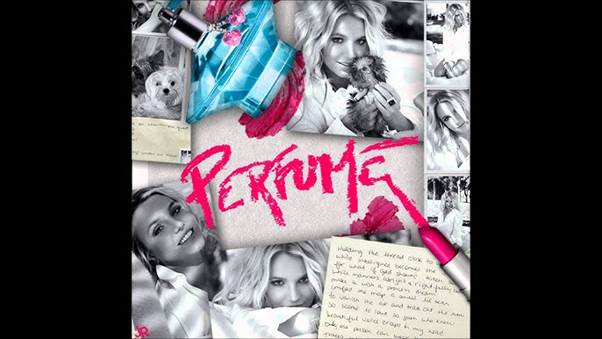In the hyper-visual, relentlessly public world of modern pop music, Sia Furler is a fascinating paradox. She is a global superstar with a voice that can shatter glass and mend a broken heart in the same breath, yet she has made a career of hiding her face. She is the creative force behind some of the biggest radio hits of the last two decades, yet for many of them, her name is buried deep in the liner notes, unknown to the millions who sing along.
With a net worth estimated at a cool $30 million, Sia is not just one of the most unique artists of her generation; she is also one of the most successful. Her fortune was not built on brand endorsements, reality TV shows, or a carefully curated Instagram feed. It was built on the pure, undeniable power of her craft: songwriting. She has masterfully navigated three distinct and highly successful careers—first as an indie-soul darling, then as a behind-the-scenes hitmaking genius for A-list stars, and finally, as a reluctant pop icon on her own fiercely protected terms.
This is the story of how a creatively frustrated artist from Adelaide, Australia, transformed herself into the music industry’s most sought-after songwriter and, in the process, became a bigger star than she ever intended, proving that the most powerful voice doesn’t need to show its face.

The Adelaide Artist – A Foundation in Jazz and Soul
Sia’s journey to the top of the pop charts began far from the glamour of Los Angeles, in the bohemian, artist-friendly city of Adelaide, South Australia. Born into a creative family—her father was a musician and her mother an art lecturer—Sia was immersed in music from a young age. In the mid-1990s, she began her career not as a pop singer, but as the soulful vocalist for a local acid jazz band called Crisp. This early experience honed her vocal skills and gave her a foundation in the raw, emotive performance style that would later become her signature.
After Crisp disbanded, Sia released her first solo album, OnlySee, in Australia in 1997. It was a commercial failure, but it prompted a life-changing move. Disenchanted with the local scene, she relocated to London, seeking a larger audience and new creative avenues. It was there she found her first taste of international recognition, though not as a solo star.
She became a go-to vocalist for the acclaimed British downtempo duo Zero 7. Her ethereal, soulful vocals graced several of their most beloved tracks, including “Destiny” and “Distractions,” from their seminal album Simple Things. For fans of the early 2000s chillwave scene, Sia was a familiar and cherished voice. This period was crucial; it gave her international exposure and credibility within the independent music world, but it also reinforced her role as a featured artist rather than a headliner. While she released her own solo albums during this time, they achieved only modest success, leaving her creatively unfulfilled and financially insecure.
The Hitmaking Machine – The Pen Behind the Pop Elite
By the late 2000s, Sia was on the verge of quitting music altogether. Disillusioned with the pressures of being a touring artist and frustrated by her lack of solo success, she decided to pivot. Instead of trying to be the star, she would become the secret weapon behind the stars. She moved to the United States and began to focus exclusively on songwriting for other artists. This decision would change the course of her life and become the bedrock of her financial empire.
Her breakthrough as a songwriter came when she penned several tracks for Christina Aguilera’s 2010 album, Bionic. While the album wasn’t a massive commercial hit, it put Sia on the map in the elite circles of pop music production. The floodgates soon opened. Pop’s biggest names began seeking out her unique ability to craft emotionally resonant lyrics with stadium-sized, anthemic hooks.
The list of hits she has written for other artists is staggering and represents the core of her wealth generation. Songwriting royalties and publishing rights are one of the most lucrative and enduring income streams in the music industry, and Sia became a master of the craft. Her major songwriting credits include:
- Rihanna – “Diamonds”: One of the most iconic pop ballads of the 2010s, “Diamonds” was reportedly written by Sia in just 14 minutes. The song became a global #1 hit, and her royalty checks from this single track alone are immense.
- David Guetta ft. Sia – “Titanium”: Though she was the featured vocalist, Sia initially wrote this song for another artist. Guetta decided to keep her original demo vocals, and the track became a worldwide dance anthem, solidifying her reputation as a hitmaker.
- Flo Rida ft. Sia – “Wild Ones”: Similar to “Titanium,” this track became another global smash hit, with Sia’s soaring chorus being the undeniable highlight.
- Beyoncé – “Pretty Hurts”: A powerful ballad about the dark side of beauty standards, this song showcased Sia’s ability to write with depth and substance, earning a prime spot on Beyoncé’s critically acclaimed self-titled album.
- Ne-Yo – “Let Me Love You (Until You Learn to Love Yourself)”: A massive dance-pop hit that further demonstrated her versatility.
- Britney Spears – “Perfume”: A vulnerable and emotional ballad that became a fan favorite.
For nearly half a decade, Sia was the music industry’s most potent hidden force. She was building a formidable fortune and an unparalleled reputation, all while enjoying the anonymity she craved. She had found the perfect balance—financial success without the crushing weight of fame.
The Reluctant Icon – The “1000 Forms of Fear” Breakthrough
Ironically, it was her very success as a songwriter that dragged her back into the spotlight. As part of her recording contract, she still owed her label one more album. Viewing it as a mere contractual obligation, she recorded “1000 Forms of Fear,” an album filled with the raw, powerful pop songs she had become known for writing. To lead the album, she released a song she had originally written with Rihanna in mind: “Chandelier.”
The result was explosive and unexpected. “Chandelier,” a haunting anthem about the dark side of partying and alcoholism, became a global phenomenon. Its raw vocal performance and unforgettable chorus were unlike anything else on the radio. The song catapulted Sia into a level of superstardom that dwarfed anything she had ever experienced.
Suddenly, the woman who had built a career behind the scenes was one ofthe biggest pop stars in the world. This presented a dilemma: how to capitalize on this success while protecting the privacy she had fought so hard to maintain. Her solution was as brilliant as it was unconventional.
She followed up her success with the 2016 album “This Is Acting,” a masterful concept that perfectly bridged her two worlds. The entire album was composed of songs she had written for, but were rejected by, other major artists like Adele, Rihanna, and Katy Perry. It was a collection of “spares” that became a cohesive, powerful statement. The lead single, “Cheap Thrills,” became her first-ever Billboard Hot 100 #1 hit, solidifying her status as a bona fide headliner. She had successfully turned other artists’ rejects into her own personal triumphs.

The Art of Anonymity – Building a Brand Without a Face
With her solo career now at its peak, Sia made a radical decision: she would not show her face. She began appearing in public and in performances obscured by an oversized, two-toned black-and-blonde wig that covered her eyes. This was not just a gimmick; it was a powerful artistic statement and a brilliant business move.
Sia explained that the wig was a way to maintain a degree of privacy and control over her own image. After years of struggling with the pressures of fame, she wanted to create a boundary between her personal self and her artistic persona. The wig allowed the audience to focus on the music and the performance, rather than on her celebrity.
This act of anonymity, however, became her most powerful marketing tool. It created an air of mystery that made her even more compelling. To bring her music to life visually, she began a career-defining collaboration with a young, phenomenally talented dancer named Maddie Ziegler. Ziegler became Sia’s on-stage and in-video avatar, performing with breathtaking emotional intensity in music videos for “Chandelier,” “Elastic Heart,” and “Big Girls Cry.” These videos became viral sensations, racking up billions of views and establishing a visual brand for Sia that was instantly recognizable, all without ever revealing her face.
Diversifying the Sound – Soundtracks, Supergroups, and Cinema
With her status as both a hit writer and a solo star secure, Sia has continued to diversify her portfolio, adding several more lucrative streams to her income.
- Film Soundtracks: Sia has become a highly sought-after contributor to blockbuster movie soundtracks, a role that often comes with a significant paycheck. She has lent her voice and songwriting skills to films like The Hunger Games: Catching Fire (“Elastic Heart”), The Great Gatsby, Wonder Woman (“To Be Human”), and numerous animated features.
- LSD (Labrinth, Sia & Diplo): In 2018, she formed the supergroup LSD with British musician Labrinth and American producer Diplo. The psychedelic pop project has released several successful singles, including “Thunderclouds,” allowing her to explore a different creative direction.
- Directing and Film: In 2021, Sia wrote and directed her first feature film, Music. While the film was met with significant controversy and critical backlash for its portrayal of autism, it represented a major creative and financial undertaking.
- Voice Acting: She has also taken on voice acting roles in popular animated films like My Little Pony: The Movie and Peter Rabbit.
- Real Estate: Like many high-net-worth individuals, Sia has invested astutely in real estate, reportedly owning a portfolio of architecturally significant homes in the Los Angeles area.
The Voice That Powers an Empire
Sia Furler’s journey is a testament to the power of perseverance and the value of pure talent. Her $30 million net worth was not built on conventional stardom. It was built in quiet writing rooms, crafting emotional anthems for others until the world demanded to hear her sing them herself.
She has achieved something that is nearly impossible in the modern music industry: she has become an icon on her own terms. By hiding her face, she has revealed something more profound—that a truly great song, and a truly powerful voice, needs no celebrity attached. It simply needs to be heard. In doing so, she has not only protected her peace but has also masterfully engineered a unique, enduring, and incredibly profitable brand.


